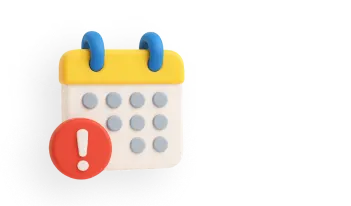What is EID Number in Aadhaar Card? How to Find & Format Details
The Aadhaar card is a vital identity document for Indian citizens, enabling access to government and financial services. For those who have enrolled but have not yet received their Aadhaar card, the Enrolment ID (EID) is a vital reference. The EID enables applicants to monitor their Aadhaar application status and access services associated with Aadhaar. This article describes what an EID number is, how it is created, its advantages, and how to utilize it for various Aadhaar-related procedures.
What is EID Number on an Aadhaar Card?
The Enrolment ID (EID) is a 28-digit number assigned when applying for an Aadhaar card. It helps track the Aadhaar enrolment process. The first 14 digits are randomly generated, while the remaining 14 represent the date and time of enrolment.
To get an EID, visit an Aadhaar enrollment centre and submit your details, biometric data, and proof of valid ID/address. You’ll receive an acknowledgement slip with your EID. An EID is essential for tracking Aadhaar status, identity verification, KYC completion, and downloading e-Aadhaar.
Benefits of Knowing Aadhaar Enrolment ID
Having your EID or Aadhaar Enrolment ID provides several advantages. It is a reference that allows you to track the current status of an Aadhaar application efficiently. With your EID, you can check if your Aadhaar card has been issued and identify processing issues.
Having an EID also simplifies the KYC verification process for financial services, such as opening new accounts, receiving benefits from government schemes or applying for loans, as many institutions accept it for identity verification.
What is the Aadhaar EID Format?
An Aadhaar Enrolment ID (EID) is a unique numeric code issued during the application process to track an individual's Aadhaar application. It typically consists of a 14-digit enrolment number followed by a timestamp. For instance, an EID issued on 15th October 2024 might look like this:
5678/12345/67890 15/10/2024 10:30:45
The first 14 digits represent details such as the enrolment centre code and date of enrolment. the timestamp indicates the time of your enrolment. this structure ensures that every EID is unique, reducing the risk of duplication.
How to find the EID Number in Aadhaar card?
You can easily find an EID number on your Aadhaar card at the top of your Aadhaar letter or e-Aadhaar document. It is present just below your Aadhaar number for quick reference.
How to Use EID Number to Download e-Aadhaar?
To download your e-Aadhaar card using your EID number, follow the steps mentioned below:
Step 1: Go to UIDAI's e-Aadhaar page.
Step 2: Enter your 28-digit enrolment ID (EID) and security code.
Step 3: Tap ‘Generate OTP’ to receive a password on your registered mobile number.
Step 4: Enter the OTP and click ‘Verify and Download’.
Step 5: Once verified, your e-Aadhaar will be available for download.
How to Recover a Lost or Forgotten Aadhaar EID online?
If you have misplaced your Aadhaar number or EID, you can easily retrieve it through the UIDAI website. Follow these steps to recover your EID:
Step 1: Go to the UIDAI website and select 'Retrieve Lost or Forgotten EID/UID' under ‘My Aadhaar.’
Step 2: Choose to retrieve your Enrolment ID number.
Step 3: Fill in your name, registered email/mobile number, and the captcha.
Step 4: Click 'Send OTP' and insert the received OTP.
Step 5: After submitting the OTP, your EID number will be sent to you by email or SMS.
Related Articles:


